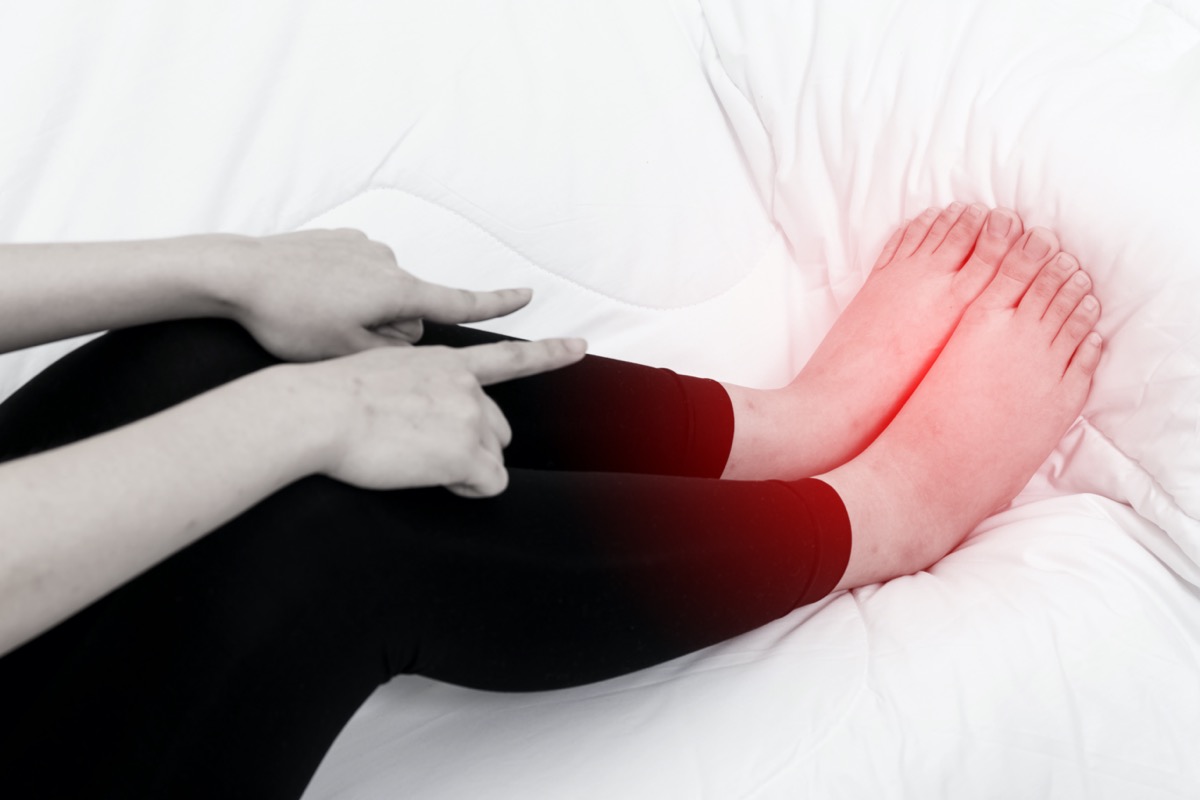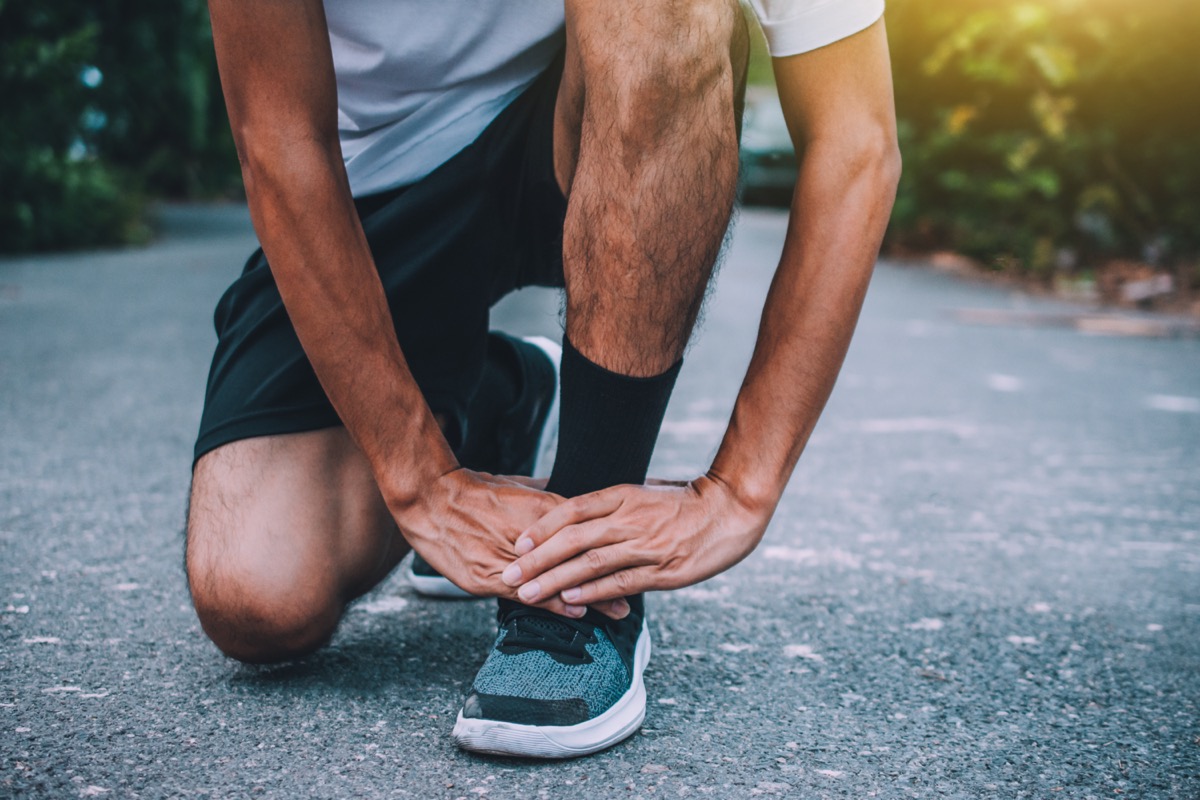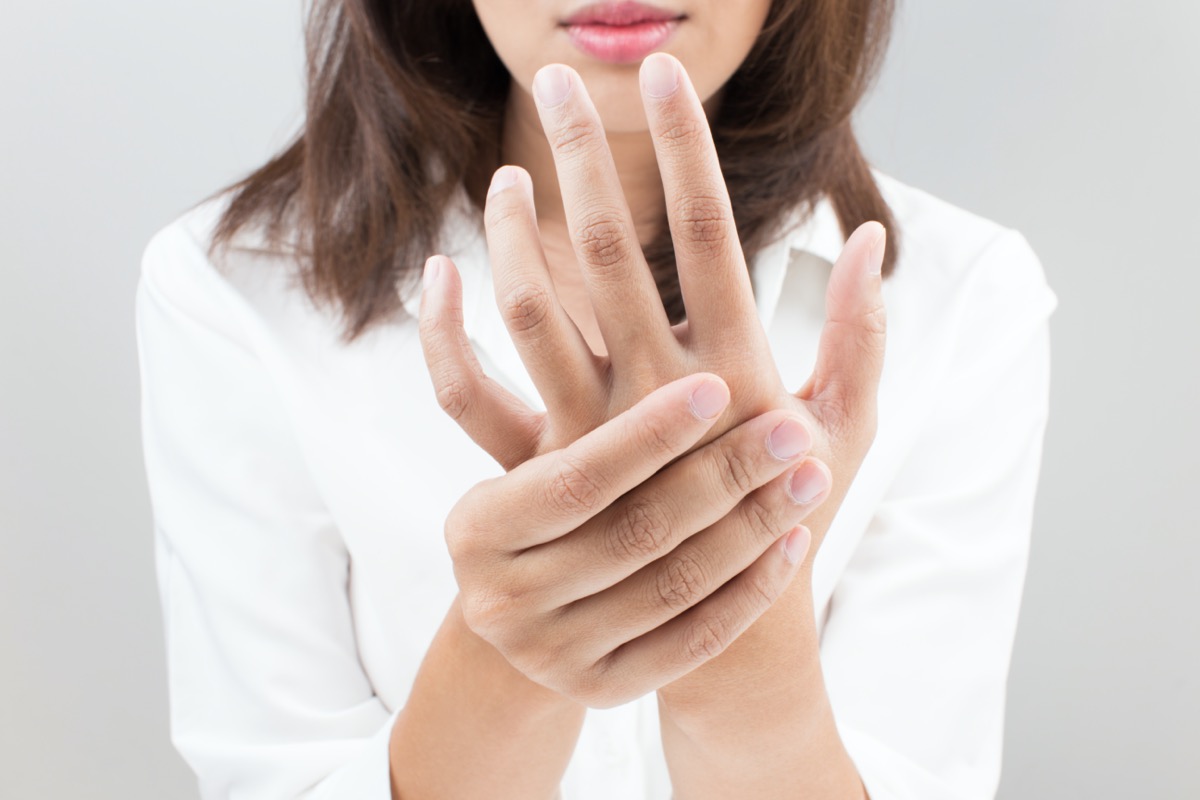Poor circulation, also known as peripheral arterial disease (PAD) is a common health concern that affects, "approximately 6.5 million people age 40 and older in the United States, according to the Centers for Disease Control and Prevention and where's why it's worrisome. The CDC states, if you have PAD and it's not treated you're at great risk, "for developing coronary artery disease and cerebrovascular disease, which could lead to a heart attack or stroke." In addition, "Many chronic conditions such as diabetes, high blood pressure and high cholesterol can after many years result in poor circulation but poor circulation does not cause any of these health conditions," Dr. Laura Purdy, MD, MBA, 'America's Doctor' Psychologist, Digital Health Evangelist, Veteran tells us. She adds, "In the later stages of advanced circulatory problems, extremity infections, numbness, amputations, and foot ulcers can be long term complications." Here's what to know about poor circulation and five symptoms to look out for. Read on—and to ensure your health and the health of others, don't miss these Sure Signs You've Already Had COVID.
Dr. Purdy says, "Bad circulation refers to conditions that impact either the delivery of blood that is carrying oxygen from the heart to organs and tissues or returning of blood from the organs and tissues back to the heart and then the lungs to receive new oxygen. If either one of these two processes are impaired, that can be referred to as "bad circulation". There are many reasons why the circulation of blood can be diminished. Most of the reasons involve chronic health conditions. Arteries are the blood vessels that are responsible for carrying blood to the body tissues and organs. This part of circulation is impaired when something causes narrowing of these arteries. Diabetes, high blood pressure, certain vascular autoimmune conditions, and cigarette smoking are some of the most common causes of narrowing of the arteries in the extremities, which we call Peripheral Artery Disease. Veins are responsible for carrying blood back to the heart after it has delivered oxygen to the body. Problems with circulation in the veins usually involve widening of the veins that makes them lead efficiently at moving blood back to the heart. We call this venous insufficiency and it is commonly seen in people who spend a lot of time on their feet, pregnant women and people with obesity. Another much more rare cause of poor venous circulation are blood clots in veins. This can happen in some people who have a family history of blood clots, people with cancer or certain medications that predispose to clotting, or after sitting down for long periods of time without moving. This is a more short-term problem with circulation and can be resolved with treatment of the clot. All of the other causes of poor arterial and venous circulation are more long term and cannot be cured but can be managed."

Dr. Purdy explains, "If your legs below the knees are swollen at the end of the day with marks on your legs where the socks and shoes were, this is a sign of early venous insufficiency. It is due to gravity and the pressure put on the legs from standing or a high BMI. Many people often request diuretics or "water pills" for this type of swelling but it is not medically recommended or safe to use. It also does not solve the problem. Using medical grade compression stockings (25mmHg or higher) at the beginning of and throughout the day, elevating the feet at night, weight loss if needed and moderate lower extremity exercise can benefit this type of poor circulation."

According to Dr. Purdy, "This is a long term sign of many years of poor venous circulation. These changes in the skin are oxidized iron from hemoglobin in the blood that is allowed to sit in the extremity without returning to the upper body for long periods of time. Compression socks, weight loss, management of chronic conditions and leg elevation are all also great tips for managing advanced venous insufficiency and venous stasis, but if you see these signs, it would be beneficial to consult with a vascular surgeon, as there are some surgical options available."

"Numbness, tingling, coolness or pale skin on the legs are all signs of poor arterial circulation," says Dr. Purdy. "It may be worse while you are sitting down or perhaps after activity. This type of circulatory problem should be managed in conjunction with your primary care manager and potentially consultation with a vascular surgeon because the long term complications can be severe. There are some prescription medications that can be prescribed to help with poor arterial circulation in the legs as well."

Dr. Purdy tells us, "This is a very sign of severely compromised circulation In the legs and should warrant immediate consultation with your PCP. The medical term for this is "claudication" and it occurs when there is not enough blood supply to adequately nourish the leg muscles while walking. It is similar to angina that is felt in the heart when coronary circulation is poor from blockages in the arteries. This type of pain is very intense and not similar to muscle soreness from exertion. It will resolve after stopping activity because the muscles are not demanding as much blood. If you experience this symptom it is very important to seek a doctor's help immediately."

Dr. Purdy shares, "It is more rare to have circulatory problems in the hands or upper extremities, but it can happen. Because the hands are closer to the heart it is rare to have arterial or venous problems there. There is a health condition called Raynaud's syndrome or phenomenon, and it is often associated with autoimmune conditions such as lupus or rheumatoid arthritis. These symptoms can occur when exposed to cold, but in some People it happens spontaneously with no known cause. If you experience these symptoms it is important to take photos of the appearance of the hands, because when you go to see your doctor you will not likely be experiencing symptoms at that time. There are some medications that Can help with these symptoms. It also may be important for you to have a workup for autoimmune conditions and you may need to see a rheumatologist.
The post 5 Ways to Tell if You Have "Bad Circulation" appeared first on Eat This Not That.
----------------
By: Heather Newgen
Title: 5 Ways to Tell if You Have "Bad Circulation"
Sourced From: www.eatthis.com/ways-to-tell-if-you-have-bad-circulation/
Published Date: Fri, 02 Sep 2022 12:00:43 +0000
Read More
Did you miss our previous article...
https://naturesmart.us/fitness/10-popular-midwestern-dishes-that-arent-actually-from-the-midwest
 HealthWellnessFitnessBeautyVideosPrivacy PolicyTerms And Conditions
HealthWellnessFitnessBeautyVideosPrivacy PolicyTerms And Conditions
